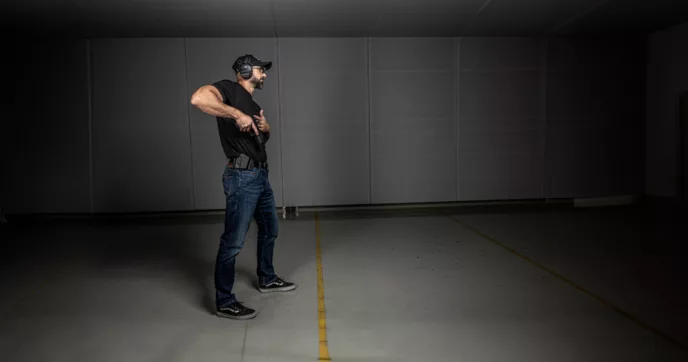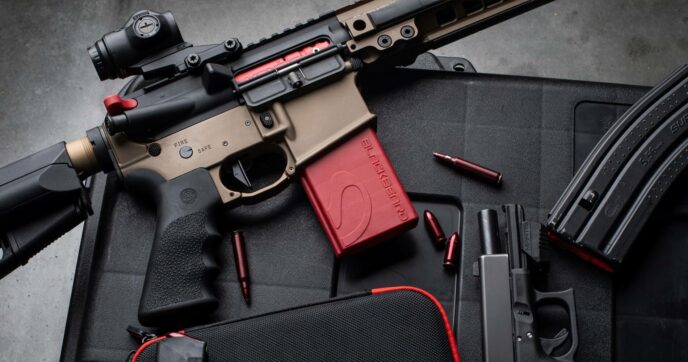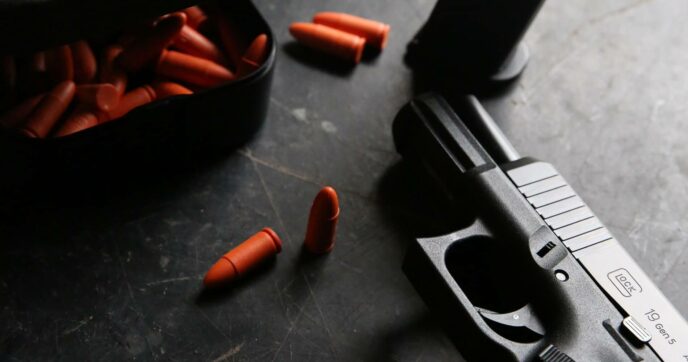Winter is upon us, and with that comes a multitude of outdoor activities in the snow. Bundling up for a day of skiing, sledding, or any other snow adventure is one thing, but when it comes to training at the range, there are other considerations that need to be factored in. Being able to safely move and draw your gun is imperative, as well as properly manipulating your firearm and keeping it well maintained.
If you carry a firearm for self-defense, you need to train in the elements. Consistently retreating to an indoor shooting range during inclement weather will not equip you to be properly prepared if a threat situation should arise. Outdoor training is highly beneficial, but you need to be prepared. Below are 5 must know tips for winter shooting.
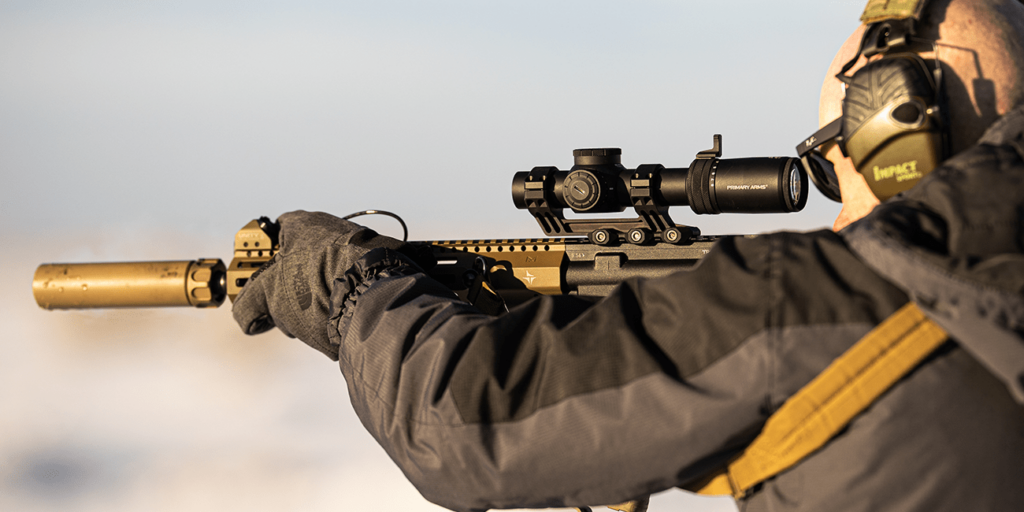
Specialized Cold Weather Gear and Apparel
Dressing in layers is the key to staying warm and being able to function in winter weather. There is more to this than simply putting on as many clothes as possible. If you show up to the range so layered that you can barely move, it will be very difficult to shoot, let alone shoot safely. There is actual proven science that goes into this.
Concentrate on three layers, each providing a specific purpose, and make sure they are not skintight. They should be snug, but air should be between your skin and each layer. Having a thin layer of air between your skin, first layer, and between your layers of clothing helps insulate against the cold. Now, let’s get into each layer.
First, a base layer for absorption. A good wicking undershirt is a good option to move sweat away from the skin. If your skin is damp, the cooling process of evaporation sets in which causes shivering. Once you shiver, it will be impossible to shoot or control your gun.
Second, a middle layer for insulation. Sweaters, hoodies, or anything you are comfortable in that will help trap in your body heat and insulate you from the cold. Third, an outer layer.
The outer layer is for protection. This would be a coat or jacket that protects your inner layers from wind, rain, and snow. The same “rule of 3” for layering should apply to your lower body as well. A good pair of wicking leggings, an insulate pair of pants, and a protective outer pant that is also conducive to moving and shooting.
Shop In Stock OuterwearBuy Now
Additionally, you will want to incorporate other items for protection such as a warm hat, cold weather gloves, and proper boots that will offer safe traction in wet and slippery conditions. The most important thing to remember is to balance staying warm with still being able to move freely.
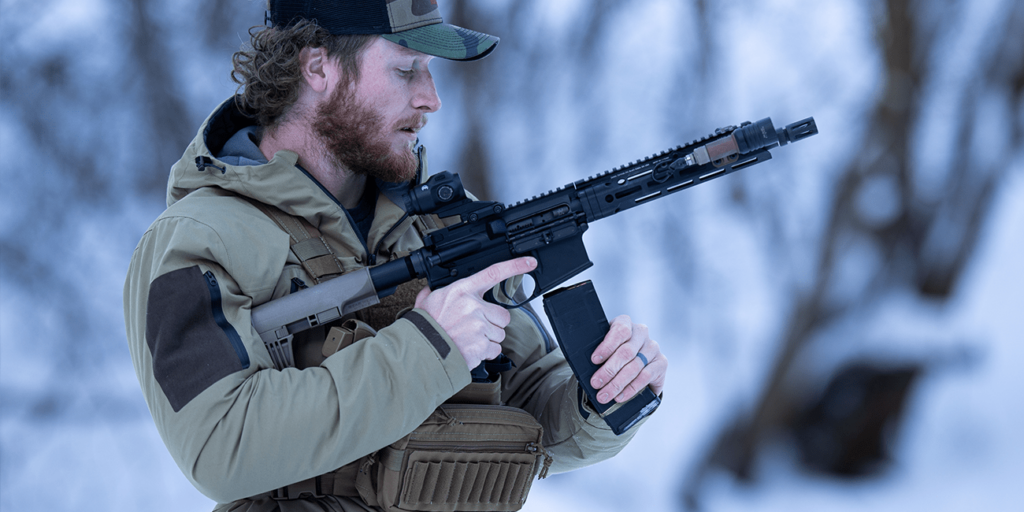
Practice Firearm Handling Skills Beforehand
Whatever you are going to wear to the range to train in, you need to wear indoors and do some dryfire training. You need to make certain you can move in your clothing and able to handle your gun with gloves. Practicing your draw to ensure you can safely present your firearm is highly beneficial. Fully understanding how you need to work around your cold weather gear reduces the possibility of a negligent discharge.
This is also a great way to make certain the clothing you chose will actually work well for you. If not, you can change it and keep working at it until you have found what works for you. The most important factor is being ready when it is time to actually shoot. You do not want to be fumbling around to find or shoot your gun. Being prepared physically and mentally for the additional steps or possible challenges will ensure a much more productive and beneficial range experience.
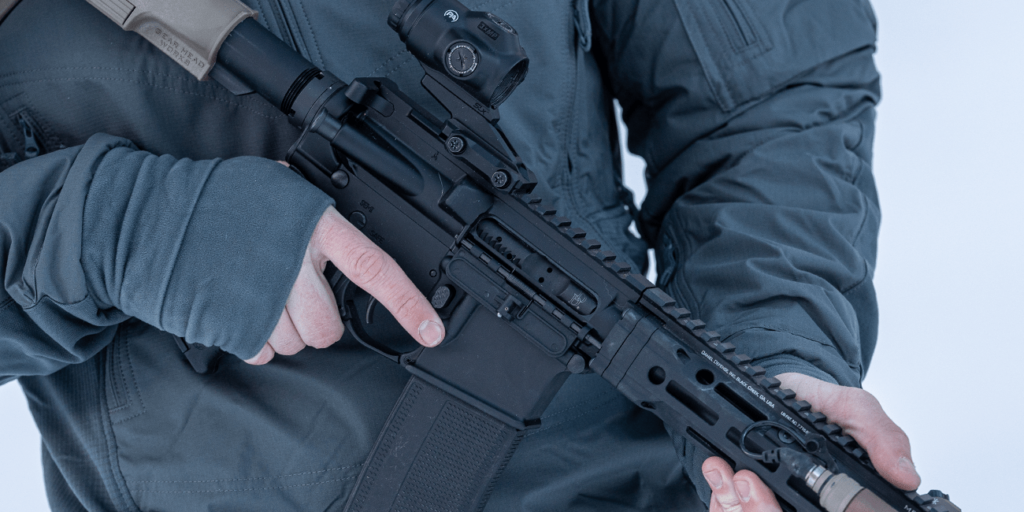
Gun Oil for Cold Weather
Shooting in winter weather can take a toll on your firearms if they are not properly cared for.
An obvious concern is moisture from snow or rain, but also condensation. Keeping your firearm wiped down and protected during breaks in training is always a good idea. Once finished and you bring your firearm back into a warmer environment, condensation can build from the change in temperature. Allow your gun to warm to room temperature, then wipe it down and lubricate it.
A bigger concern is using lubrication on your firearm in cold weather. There are several lubricants available that are made to resist cold weather temperatures. Even then, one should be careful not to use excess oil. Although you need lubrication to ensure consistent, friction-free cycling of your firearm, lubricants can lose their viscosity in frigid temperatures.
Shop In Stock Oils & LubricantsBuy Now
During extremely cold-weather climates, gun lubricants stand the risk of freezing. Even if the lubricant does not freeze, it might become gummy or sticky and do the exact opposite of what it’s supposed to. As a result, your firearm could experience severe malfunctions or even become inoperable.
Fortunately, most firearms today are designed to work well and function in varying weather conditions. That said, it never hurts to be aware and conscientious of your firearm and its condition to ensure proper function.
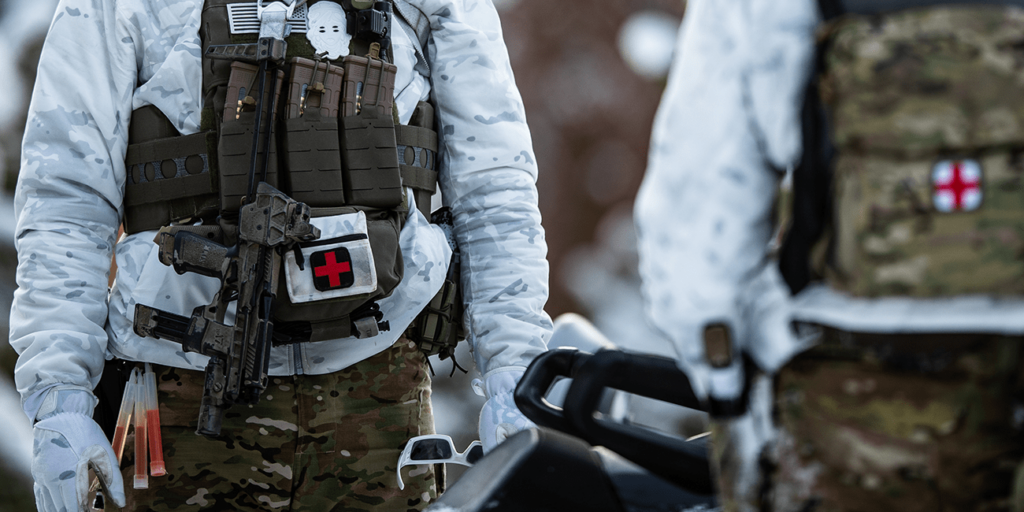
Update Your First Aid and Emergency Kit
Anytime you are on the range you should have a complete first aid kit and tourniquet available. In cold weather, there are a few extra precautions you will want to be prepared for to avoid emergency situations. Consider adding these to your first aid kit and gear. A mylar emergency blanket, air-activated hand, body, and foot warmers, waterproof matches, emergency flares, non-perishable food such as energy bars, and water.
Shop In Stock First Aid KitsBuy Now
It is wise to have instructional cards on what to do in case of hypothermia and other cold weather-related conditions. Even if you are well prepared, the chances of someone else showing up ill prepared and falling victim to winter weather conditions are always a possibility.
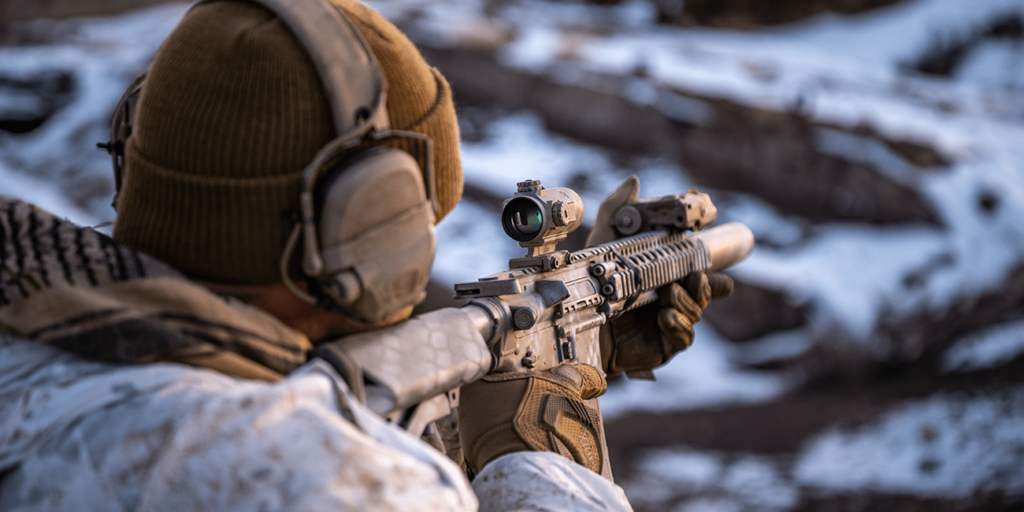
Conclusion
Whether you’re shooting at -20 or just below freezing, many of the same principles hold true. Your effectiveness on the range or on the hunt is dependent on your tool kit, and cold weather shooting has a very specialized tool kit. Hopefully, this guide can help you get started for your next cold weather shooting excursion.
If you have any additional questions about the subjects or products covered in this blog, we’d like to hear it! Just click the ‘chat’ button on the right side of the page, or message us on social media. We’ll be happy to hear your thoughts and help recommend any resources for your cold weather shooting kit.
